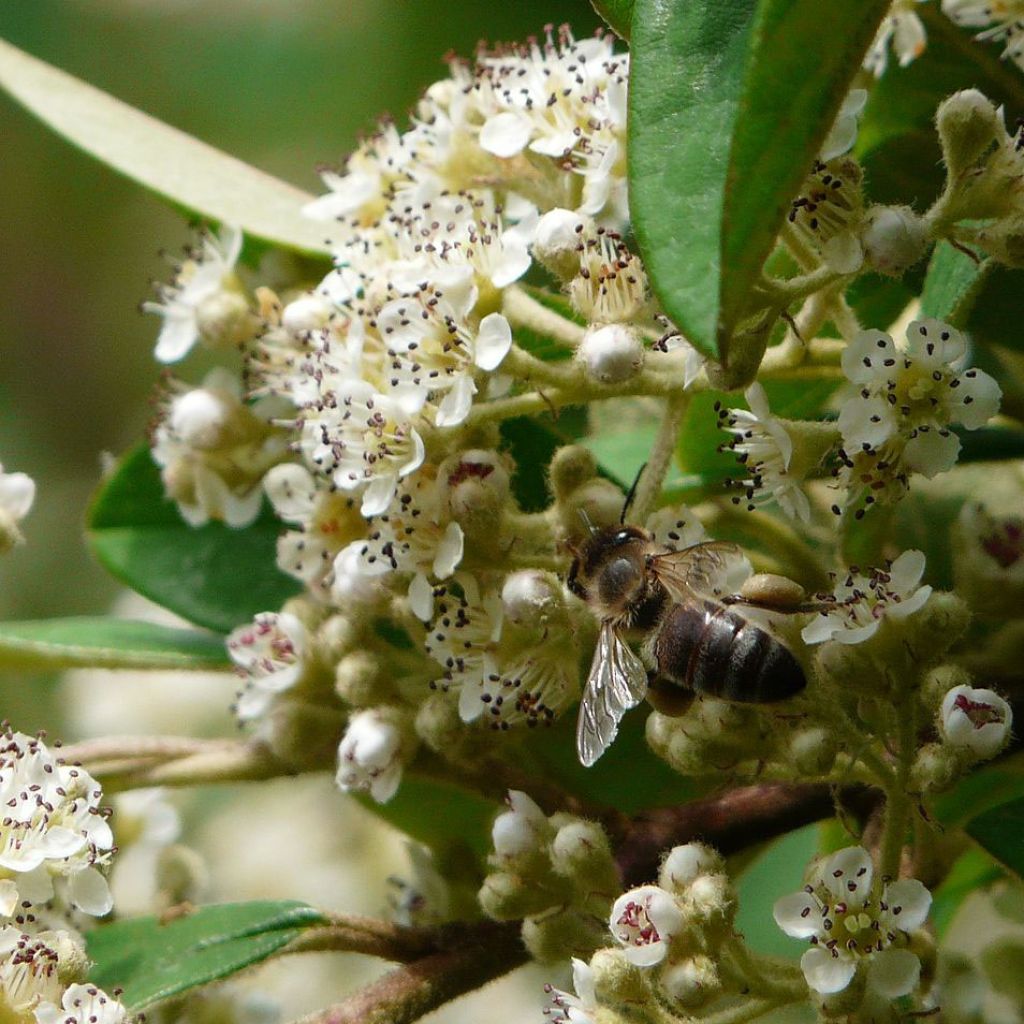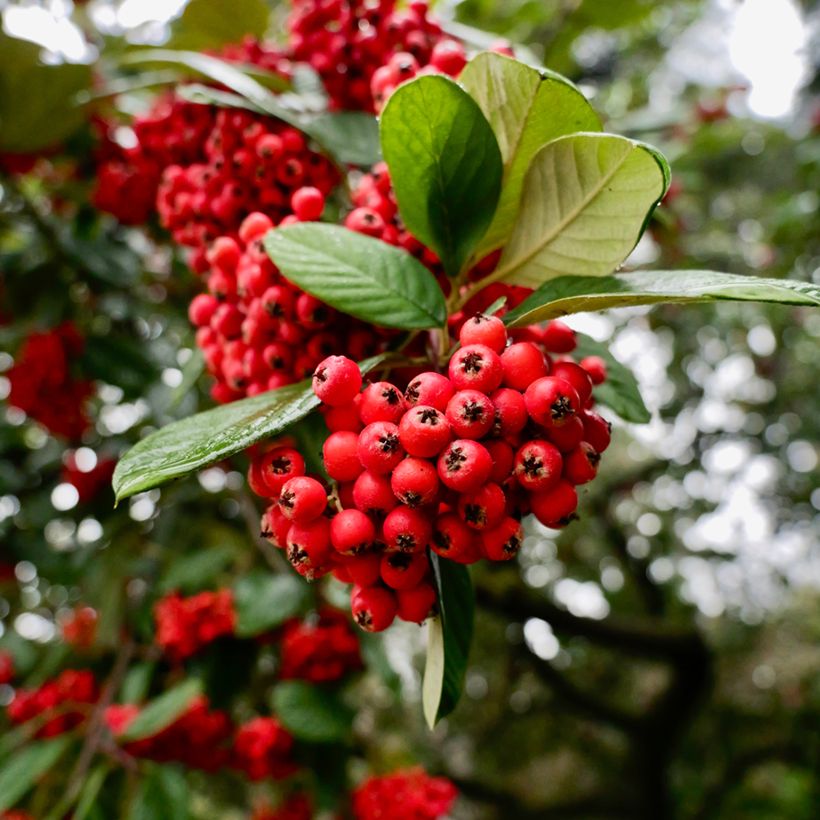

Cotoneaster lacteus - Milky Cotoneaster


Cotoneaster lacteus - Milky Cotoneaster


Cotoneaster lacteus - Milky Cotoneaster


Cotoneaster lacteus - Milky Cotoneaster


Cotoneaster lacteus - Milky Cotoneaster


Cotoneaster lacteus - Milky Cotoneaster


Cotoneaster lacteus - Milky Cotoneaster


Cotoneaster lacteus - Milky Cotoneaster


Cotoneaster lacteus - Milky Cotoneaster


Cotoneaster lacteus - Milky Cotoneaster
Cotoneaster lacteus - Milky Cotoneaster
Cotoneaster lacteus
Late Cotoneaster
Very pretty bush, exactly as described and in excellent condition, as was its packaging.
Cat78, 19/12/2025
Special offer!
Receive a €20 voucher for any order over €90 (excluding delivery costs, credit notes, and plastic-free options)!
1- Add your favorite plants to your cart.
2- Once you have reached €90, confirm your order (you can even choose the delivery date!).
3- As soon as your order is shipped, you will receive an email containing your voucher code, valid for 3 months (90 days).
Your voucher is unique and can only be used once, for any order with a minimum value of €20, excluding delivery costs.
Can be combined with other current offers, non-divisible and non-refundable.
Home or relay delivery (depending on size and destination)
Schedule delivery date,
and select date in basket
This plant carries a 24 months recovery warranty
More information
We guarantee the quality of our plants for a full growing cycle, and will replace at our expense any plant that fails to recover under normal climatic and planting conditions.

Would this plant suit my garden?
Set up your Plantfit profile →
Description
The Cotoneaster lacteus is one of those bushes that thrive in all positions but is not immediately thought of for creating a persistent hedge, decorating a secluded and slightly shady garden corner, or quickly forming a visual screen from neighbours. However, regardless of the soil, exposure, or climate, Cotoneaster lacteus is the bush for all situations. This bush is full of charm. Its long, arching branches are decorated with small, dark leaves that give it a natural and arching look. During spring, it produces beautiful white and fragrant flowers, which attract pollinating insects. The bush also bears bright red fruits, which are a favourite of many birds until winter. This plant is easy to care for and will be a great addition to a natural garden. It can also be pruned to fit well in a modern or well-maintained small garden.
Cotoneaster lacteus belongs to the Rosaceae family. This evergreen shrub, native to southwestern China, has naturalised in many countries, such as Australia and California, where it has become invasive. This vigorous shrub can withstand marked droughts and harsh winters, even in poor, rocky soil. It has a bushy, generally rounded and slightly arching habit, supported by curved and flexible branches, sparsely branched, with a reddish-brown colour. Its growth is relatively rapid, reaching maturity at 5 or 6 years, on average 3 m (9.8 ft) in all directions if not pruned. Regular pruning in spring will help strengthen it and maintain it at 2 m (6.6 ft) in all directions. Its evergreen foliage comprises small, thick, leathery leaves, ovate with pointed tips, not exceeding 3 cm (1.2 in) in length and 1.5 cm (0.4 in) in width. They are a glossy dark green on the upper side, almost greyish underneath. Depending on the climate, the flowering occurs from May to July as panicles measuring 7 to 8 cm (3.1 in) in diameter. Each panicle is composed of tiny flowers with 5 milky white petals surrounding stamens of deep pink. This fragrant, honey-bearing and nectar-bearing flowering gives way to pretty clusters of small round fruits gradually turning vermilion red. The fruit, appreciated by birds and small mammals, remains on the branches in winter, aiding seed dispersal and often resulting in young plants scattered randomly in gardens.
Cotoneaster lacteus - Milky Cotoneaster in pictures








Plant habit
Flowering
Foliage
Botanical data
Cotoneaster
lacteus
Rosaceae
Late Cotoneaster
China
Planting and care
Plant Cotoneaster lacteus in a sunny location to flower and fruit more abundantly. Partial or even full shade is fine in hot and dry regions, although it will flower less in the shade. It adapts well to any type of ordinary soil, whether poor, clay, limestone, stony, moist or dry in the summer. Its hardiness is remarkable, and its drought tolerance is excellent once established. This bush has few natural enemies. However, it can be susceptible to fire blight attacks from scale insects or aphids.
Planting period
Intended location
Care
Planting & care advice
-
, onOrder confirmed
Reply from on Promesse de fleurs
Similar products
Haven't found what you were looking for?
Hardiness is the lowest winter temperature a plant can endure without suffering serious damage or even dying. However, hardiness is affected by location (a sheltered area, such as a patio), protection (winter cover) and soil type (hardiness is improved by well-drained soil).

Photo Sharing Terms & Conditions
In order to encourage gardeners to interact and share their experiences, Promesse de fleurs offers various media enabling content to be uploaded onto its Site - in particular via the ‘Photo sharing’ module.
The User agrees to refrain from:
- Posting any content that is illegal, prejudicial, insulting, racist, inciteful to hatred, revisionist, contrary to public decency, that infringes on privacy or on the privacy rights of third parties, in particular the publicity rights of persons and goods, intellectual property rights, or the right to privacy.
- Submitting content on behalf of a third party;
- Impersonate the identity of a third party and/or publish any personal information about a third party;
In general, the User undertakes to refrain from any unethical behaviour.
All Content (in particular text, comments, files, images, photos, videos, creative works, etc.), which may be subject to property or intellectual property rights, image or other private rights, shall remain the property of the User, subject to the limited rights granted by the terms of the licence granted by Promesse de fleurs as stated below. Users are at liberty to publish or not to publish such Content on the Site, notably via the ‘Photo Sharing’ facility, and accept that this Content shall be made public and freely accessible, notably on the Internet.
Users further acknowledge, undertake to have ,and guarantee that they hold all necessary rights and permissions to publish such material on the Site, in particular with regard to the legislation in force pertaining to any privacy, property, intellectual property, image, or contractual rights, or rights of any other nature. By publishing such Content on the Site, Users acknowledge accepting full liability as publishers of the Content within the meaning of the law, and grant Promesse de fleurs, free of charge, an inclusive, worldwide licence for the said Content for the entire duration of its publication, including all reproduction, representation, up/downloading, displaying, performing, transmission, and storage rights.
Users also grant permission for their name to be linked to the Content and accept that this link may not always be made available.
By engaging in posting material, Users consent to their Content becoming automatically accessible on the Internet, in particular on other sites and/or blogs and/or web pages of the Promesse de fleurs site, including in particular social pages and the Promesse de fleurs catalogue.
Users may secure the removal of entrusted content free of charge by issuing a simple request via our contact form.
The flowering period indicated on our website applies to countries and regions located in USDA zone 8 (France, the United Kingdom, Ireland, the Netherlands, etc.)
It will vary according to where you live:
- In zones 9 to 10 (Italy, Spain, Greece, etc.), flowering will occur about 2 to 4 weeks earlier.
- In zones 6 to 7 (Germany, Poland, Slovenia, and lower mountainous regions), flowering will be delayed by 2 to 3 weeks.
- In zone 5 (Central Europe, Scandinavia), blooming will be delayed by 3 to 5 weeks.
In temperate climates, pruning of spring-flowering shrubs (forsythia, spireas, etc.) should be done just after flowering.
Pruning of summer-flowering shrubs (Indian Lilac, Perovskia, etc.) can be done in winter or spring.
In cold regions as well as with frost-sensitive plants, avoid pruning too early when severe frosts may still occur.
The planting period indicated on our website applies to countries and regions located in USDA zone 8 (France, United Kingdom, Ireland, Netherlands).
It will vary according to where you live:
- In Mediterranean zones (Marseille, Madrid, Milan, etc.), autumn and winter are the best planting periods.
- In continental zones (Strasbourg, Munich, Vienna, etc.), delay planting by 2 to 3 weeks in spring and bring it forward by 2 to 4 weeks in autumn.
- In mountainous regions (the Alps, Pyrenees, Carpathians, etc.), it is best to plant in late spring (May-June) or late summer (August-September).
The harvesting period indicated on our website applies to countries and regions in USDA zone 8 (France, England, Ireland, the Netherlands).
In colder areas (Scandinavia, Poland, Austria...) fruit and vegetable harvests are likely to be delayed by 3-4 weeks.
In warmer areas (Italy, Spain, Greece, etc.), harvesting will probably take place earlier, depending on weather conditions.
The sowing periods indicated on our website apply to countries and regions within USDA Zone 8 (France, UK, Ireland, Netherlands).
In colder areas (Scandinavia, Poland, Austria...), delay any outdoor sowing by 3-4 weeks, or sow under glass.
In warmer climes (Italy, Spain, Greece, etc.), bring outdoor sowing forward by a few weeks.

















































